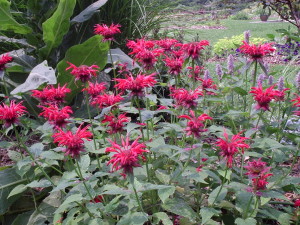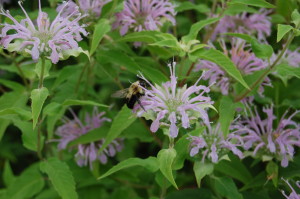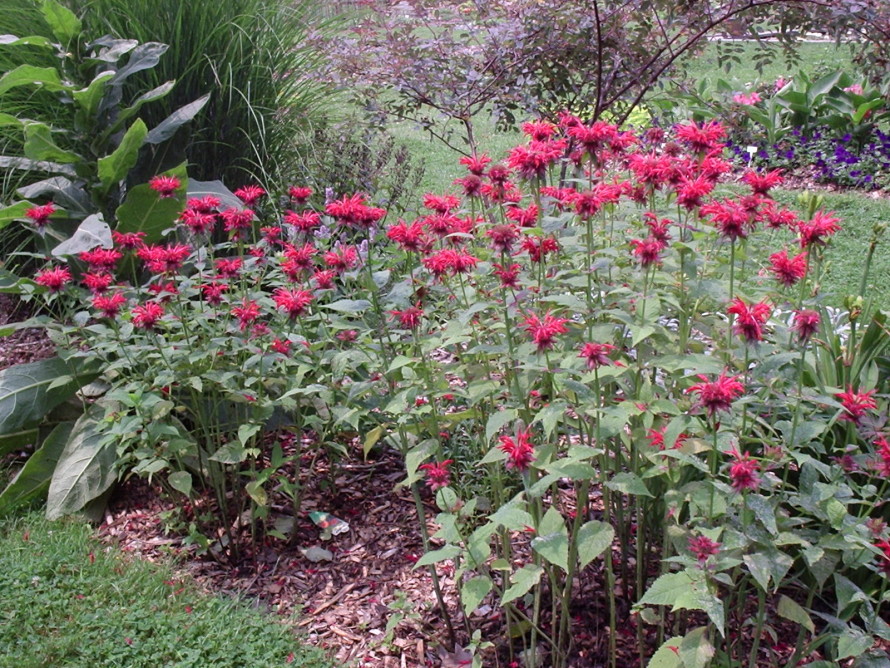
Monarda didyma
Who doesn’t love the wonderful scent of bee balm? Bee balm (Monarda spp), also called bergamot or horsemint, is native to the Northeastern US. It has a long history of use by the Native Americans who then shared their knowledge with the European settlers. It has been used as a medicinal plant, as a flavoring and, most famously, as an herbal tea. The settlers called it Oswego Tea, Oswego being the name of a local tribe. They drank it in place of imported tea when imported tea was scarce or too expensive.
Today, bee balm is used in herbal teas and also in mouthwash. It is a source of thymol, an antiseptic, which has a minty oregano flavor.
Bee balm is an herbaceous perennial hardy in zones 4 – 9. There are 4 species. Monarda didyma with the familiar red flowers, M. fistulosa (also called wild bergamot) which has lavender to pink flowers, M. citriodora and M. pectinata , both of which have light lavender flowers and are commonly called “lemon mint”. Most gardeners grow M. didyma or M. fistulosa. Both range in height from 2’ to 4’. Like most herbs, bee balm grows best in well-drained soil.

Monarda fistulosa
Bee balm prefers full sun but will tolerate some shade. In partial shade, the plants will not produce as many flowers. They will, however, continue to spread. Bee balm spreads via underground rhizomes. It’s a good idea to dig up and divide your plants every 2 to 3 years in the spring. This is especially important because bee balm is susceptible to powdery mildew. Crowded plants will result in mildew infections. Thinning them out will promote air circulation which is a good powdery mildew prevention strategy. If your plants do develop mildew, cut the affected plants down to the ground and discard them so that they don’t infect other plants. You should also cut your plants to the ground after a frost has killed them and remove the dead plants from your garden to prevent insets from overwintering in them as well as prevent disease.
Bee balm blooms from mid- to late summer. You should deadhead your plants to keep them blooming. And attracting hummingbirds. Bee balm flowers are a hummingbird magnet. Butterflies, bees and other beneficial insects are also attracted to the flowers.
You can grow bee balm from seed, division or cuttings. To grow it from seed, start it indoors 8 to 10 weeks before your last frost date. Lightly cover with soil. Germination will occur any time from 10 to 40 days later. You can plant your seedlings in your garden after all danger of frost has passed. Alternatively, you can direct sow your seeds in the spring after the last frost. Gently press the seed into the soil and keep it moist until they germinate.

